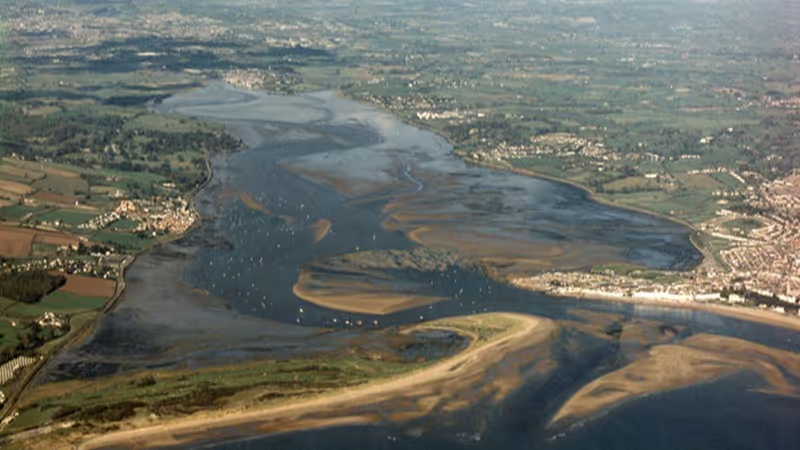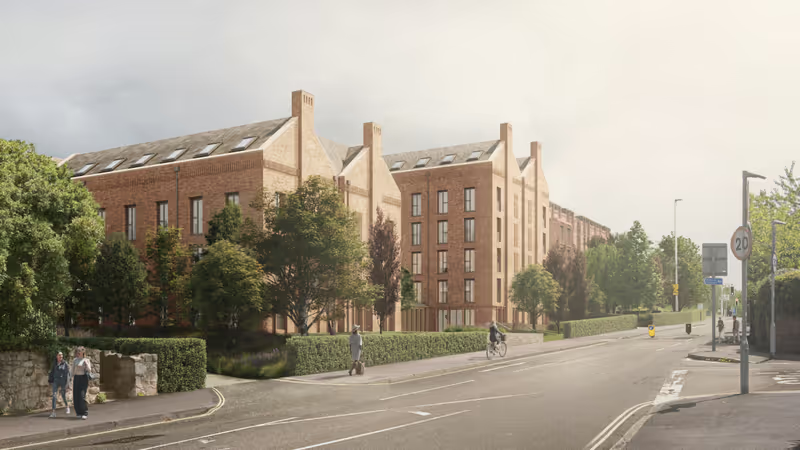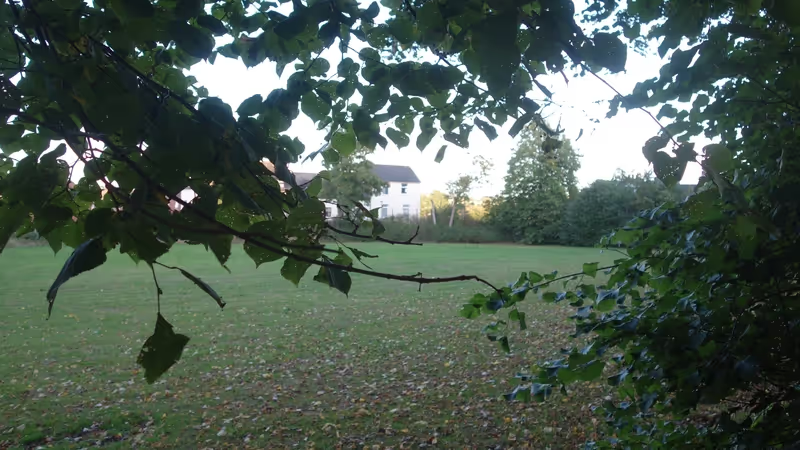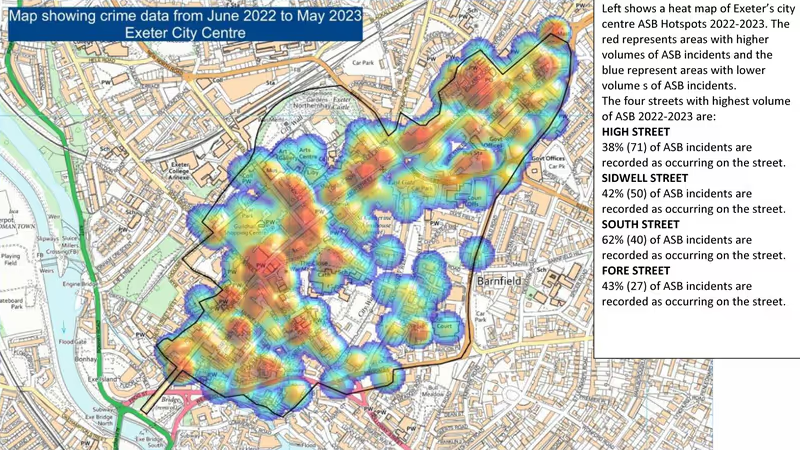Proposals to build 65 dwellings in open fields overlooking Exeter near Barley Valley Nature Reserve have prompted 175 objections, with a public consultation on the plans still to run until the end of the weekend.
An outline planning application for ten acres of agricultural land between Barley Lane and Nadder Park Road, which is supposed to be protected from development by council planning policies which designate it as part of the city’s distinctive landscape setting, was submitted in July.
Illustrative documents prepared by Clifton Emery Design which support the application say that it would include a mix of one, two, three and four-bedroom housing in detached, semi-detached, terraced and barn forms, one third of which would be designated “affordable”.
They also show around 100 residential car parking spaces, with another ten provided for visitors.
The greenfield development proposals, which reserve all matters apart from access for later determination, have so far received no public support at all following a pre-application consultation which itself generated 167 objections and only six comments in support.
 Nadder Park Road development proposals illustrative layout. Source: Clifton Emery Design.
Nadder Park Road development proposals illustrative layout. Source: Clifton Emery Design.
A planning statement prepared by PCL Planning for developer Waddeton Park Limited which accompanies the application leads with the council’s failure to identify sufficient development land inside the city boundary to meet government-set housing delivery targets over the following five years: its “five year housing land supply” position.
It adds that current Exeter Local Plan policy LS1, which was adopted twenty years ago and was intended to protect the city’s landscape setting by effectively restricting development to existing urban areas, only has slight weight in determining development decisions because it is no longer consistent with national planning policy and was not based on a sufficiently detailed assessment.
It also adds that the local plan’s more recent policy CP16, which was adopted in 2012, is less restrictive than its predecessor and so prevails over LS1.
This policy takes a more nuanced approach by seeking to protect the differing character and local distinctiveness of specific parts of the city – which include the hills to the north and north-west, the valley parks and the undeveloped gap between Topsham and the rest of Exeter – on a case by case basis.
It is more consistent with national planning policy than LS1, but it does not preclude development in the areas it is intended to protect, instead allowing consideration of the adverse impact of individual schemes against any benefits they may bring.
However, as the planning statement also says, government policy states that local plan policies such as LS1 and CP16 should normally be given less weight than they would otherwise have in determining planning applications when the council is unable to demonstrate a five year housing land supply.
This “presumption in favour of sustainable development”, also referred to as the “tilted balance”, provides that planning permission should be granted in most such circumstances (with some exceptions) unless the adverse impacts of doing so would significantly and demonstrably outweigh the benefits of the development proposals.
The planning statement also says that because the consultation on the full draft version of the new Exeter Local Plan prompted significant objections when it was held two years ago, and the council has yet to publish its response to the consultation on the final publication version of the plan held earlier this year, its weight in development decision-making should also be reduced.
Certainly new Exeter Local Plan policy NE1 – which replaces CP16 but appears to offer “Exeter’s distinctive and valued landscape” even less protection than before – remains unexamined, unadopted and untested in planning determination practice.
 Exeter Local Plan First Review 1995-2011 proposals map policy LS1 areas. Source: Exeter City Council.
Exeter Local Plan First Review 1995-2011 proposals map policy LS1 areas. Source: Exeter City Council.
The Nadder Park Road application planning statement cites four planning appeal decisions to support its arguments, all of which granted consent for development in areas of Exeter which policies LS1 and CP16 were intended to protect. Nadder Park Road scheme developer Waddeton Park was involved in two of them.
In one, a planning inspector decided that the council’s insufficient five year housing land supply meant the adverse effects of Topsham gap development, in conflict with policies LS1 and CP16, were outweighed by the presumption in favour of development. Much as is being claimed at Nadder Park Road, notwithstanding differences in landscape character and context between the two places.
(This followed a similar Topsham gap appeal decision in which Waddeton Park was also involved but which is not cited in the Nadder Park Road application.)
In the other, much older, decision, subsequently upheld in the High Court in 2015, a planning inspector found that the council’s five year housing land supply was sufficient but that development proposed at Home Farm, either side of Church Hill in Pinhoe, would comply with policy CP16 as it would not actually harm the city’s landscape setting.
The third appeal decision cited in the Nadder Park Road application concerned proposals for land overlooking the city above Pendragon Road. It concluded that the council’s insufficient housing land supply position meant that conflicts with policies LS1 and CP16 (and other local and national planning policies) would be outweighed by the benefits of development, mainly housing delivery.
The fourth appeal decision concerned agricultural land beside Exwick Lane that is only a short walk along Barley Lane from the Nadder Park Road application site. In this case a planning inspector found that while the development proposals would conflict with policy LS1 they would nevertheless not be incompatible with policy CP16 and so did not consider the council’s five year housing land supply position in allowing the appeal and granting planning consent.
 New Exeter Local Plan proposed policies map including policy NE1. Source: Exeter City Council.
New Exeter Local Plan proposed policies map including policy NE1. Source: Exeter City Council.
These decisions all permitted development in parts of Exeter’s landscape setting which policies LS1 and CP16 were intended to protect, and two did not even involve their weight being diminished by the council’s housing land supply position.
Nevertheless, other similar appeals by developers have been dismissed by the inspectorate and planning permission refused. None are mentioned in the Nadder Park Road application.
Two concerned land beside the Exwick Lane application site. All three parcels of land were originally part of the same agricultural holding: Lugg’s Farm.
The first was a smaller parcel beside the farmhouse, which is a listed building with 17th century origins. While the planning inspector concluded that the application site does not play a significant role in the city’s landscape setting, he nevertheless found that the farmland surrounding the house, which is part of an historic mediaeval farming landscape, plays a significant role in establishing the house in its former agrarian setting.
As a result, and notwithstanding the council’s inability to demonstrate a five year housing land supply, he found that the presumption in favour of sustainable development did not apply because the harm the development proposals would cause the listed farmhouse provided a clear reason for refusing them, as per national planning policy, despite the scheme’s benefits.
The second was a larger parcel of land, beside the first parcel but further away from the farmhouse. In this case the planning inspector found that the development proposals would harm the city’s landscape setting because of their wider visibility, and so conflict with policy CP16.
As he also found they would harm the setting of the farmhouse, he concluded that the presumption in favour of sustainable development did not apply and the appeal should be dismissed.
 Nadder Park Road application site location map. Source: Clifton Emery Design.
Nadder Park Road application site location map. Source: Clifton Emery Design.
The third such appeal concerned land on Exeter’s northern urban boundary beyond Pennsylvania. A planning inspector dismissed it after finding that these development proposals would also harm the city’s landscape setting because of their impact on the character and appearance of the area.
She did so notwithstanding the council’s inability to demonstrate a five year supply of deliverable housing sites and the national policy presumption in favour of granting permission for the development, which applied in this case, because she found that the benefits of the scheme, when taken as a whole, would not outweigh the harm it would cause. No listed buildings were involved.
The fourth such appeal concerned another parcel of land at Home Farm in Pinhoe, immediately adjacent to the Church Hill land then being developed after the High Court upheld Waddeton Park’s successful appeal in 2015. The firm was again the appellant.
In this case, the planning inspector also concluded that the development proposals would harm the city’s landscape setting because of their impact on the character and appearance of the area, again despite the council’s five year housing land supply shortfall, because the scheme’s benefits would be significantly and demonstrably outweighed by the harm the development would cause.
 Waddeton Park Barley Lane residential development investment project site map.
Waddeton Park Barley Lane residential development investment project site map.
Source: Waddeton Park Limited.
Each application for planning permission and any appeal against a council refusal to grant approval that follows – as almost always occurs in such peripheral Exeter greenfield cases because developers expect the council’s five year housing land supply shortfall to be its undoing – is considered in its own right, taking into account the varying particulars that pertain at each application site.
The variations in recent appeal decisions concerning development proposals on land like Nadder Park Road, which Exeter Local Plan policies LS1 and CP16 seek to protect, with new Exeter Local Plan policy NE1 eventually set to replace them, are therefore to be expected.
What they show is that the arguments put forward in this case in favour of granting permission to build on agricultural land overlooking the city are not definitive. Council planning committee members need not be intimidated into voting in favour of approval when they meet to determine the application even if the developer is expected to go straight to appeal.
And while Waddeton Park’s plans for other parcels of land cannot directly inform the committee’s determination of the Nadder Park Road application, there appears every reason to expect the firm to bring forward proposals to build on the adjacent 31 acre parcel it is marketing alongside as part of its Barley Lane residential development investment project should Nadder Park Road be approved.
Comments on the Nadder Park Road development proposals can be submitted via the city council website until Sunday 7 September. The application will be determined at a later date.










